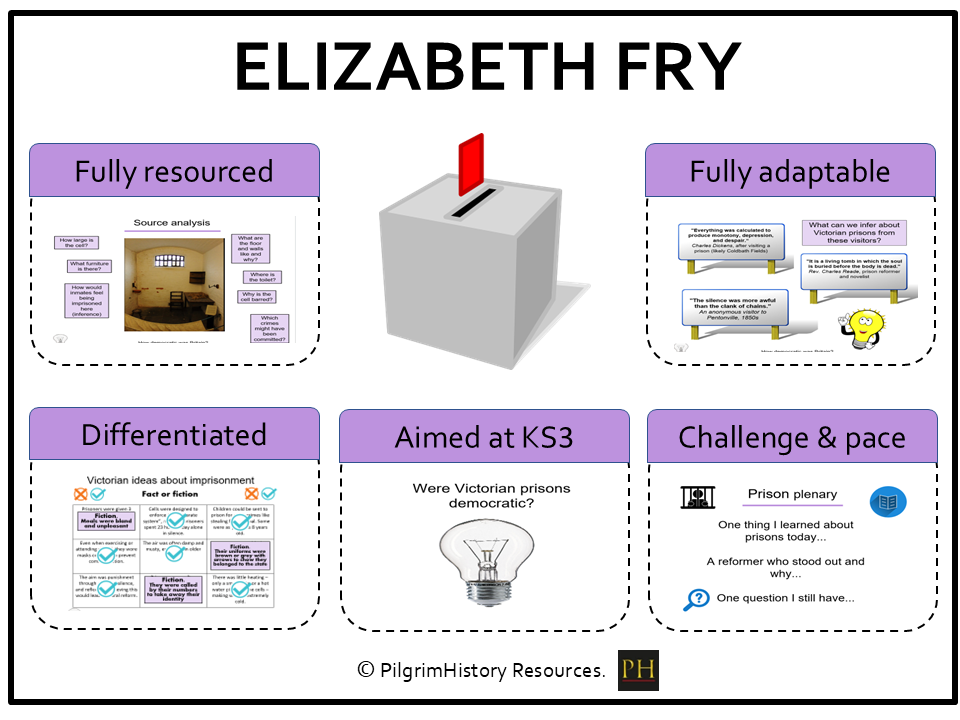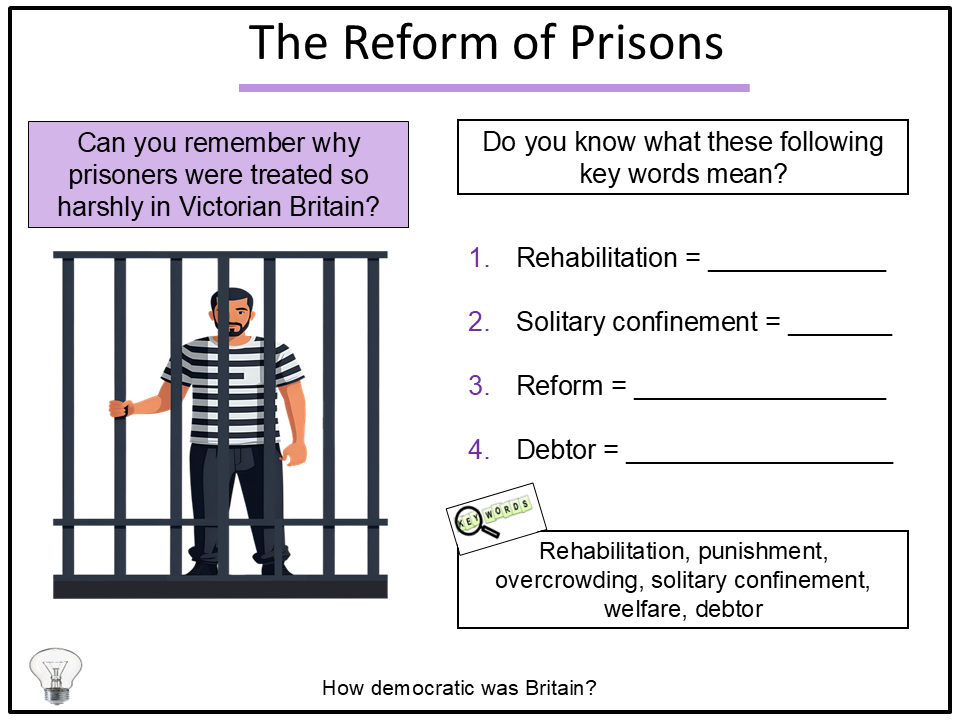


Step inside the grim, overcrowded world of early 19th Century prisons and discover how one woman, Elizabeth Fry helped change everything. This engaging and fully differentiated Key Stage 3 lesson brings the past to life with a mix of source work, active questioning and critical writing to encourage historical thinking.
The lessons begins with a ŌĆ£Could you survive a Victorian prison?ŌĆØ scenario with an atmospheric image. Students decide what theyŌĆÖd do in a prison where rats, starvation, and loneliness were the norm.
They are given the Contextual background explaining the terrifying conditions of early 1800s gaols as debtors mixed with murderers, women and children locked up together and no proper toiletsŌĆ”
Students will analyse the work of Elizabeth Fry in a case study; a narrative of FryŌĆÖs early visits to Newgate, her religious motivation and the reforms she pushed for.
There are differentiated comprehension questions are used with modelled answers, ideal for mixed-ability classes or stretch and support tasks.
A fact or fiction task separates truth from myth using provided statements about Fry and prisons. This is a great tool for checking misconceptions.
There are also contemporary accounts from visitor reports, encouraging students to infer and empathise.
Finally, an extended writing task on how far did Elizabeth Fry change prisons. Students analyse the extent and nature of change with a writing frame, key vocabulary, and success criteria included.
The lesson includes:
An engaging PowerPoint with step-by-step guidance
Printable worksheets
Source extracts and analysis
Differentiated tasks and writing scaffolds
Why teachers will love this resource:
It grabs studentsŌĆÖ attention straight away with a fun prison survival activity.
Easy to use with clear slides and worksheets included.
Works well for all abilities with different levels of questions and tasks.
Uses real historical sources to bring the past to life.
Helps students build key history skills like cause, change and significance.
Supports writing with sentence starters and key words.
Save time as everything is ready to print and teach.
It fits into crime and punishment, social reform, or Victorian history topics.
Something went wrong, please try again later.
This resource hasn't been reviewed yet
To ensure quality for our reviews, only customers who have purchased this resource can review it
to let us know if it violates our terms and conditions.
Our customer service team will review your report and will be in touch.